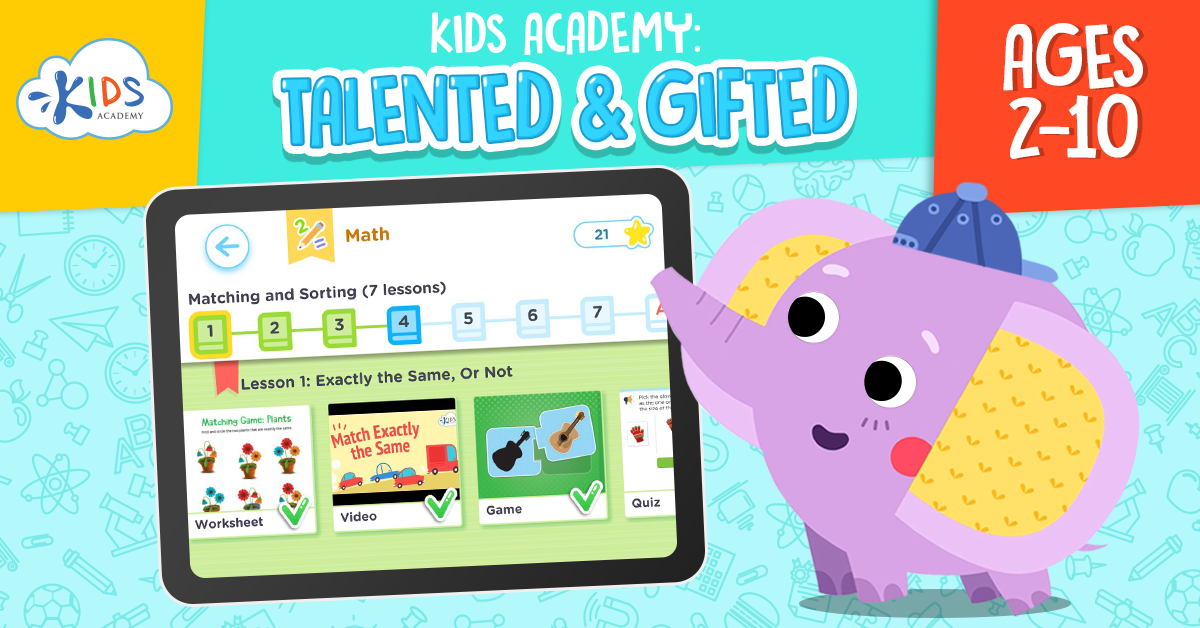Understanding regrouping Normal Math Worksheets for Ages 8-9
4 filtered results
-
From - To
Explore our comprehensive "Understanding Regrouping Normal Math Worksheets" designed specifically for children ages 8-9! These engaging resources help young learners master the essential math skill of regrouping, an important concept for addition and subtraction. With diverse problems, interactive exercises, and clear explanations, these worksheets aid students in grasping the concept comfortably. Each worksheet fosters critical thinking, enhances problem-solving skills, and boosts mathematical confidence. Perfect for classroom or home use, our step-by-step approach supports teachers and parents in guiding students through the fundamentals of math. Empower your child to excel in math with our beautifully crafted and fun regrouping worksheets today!
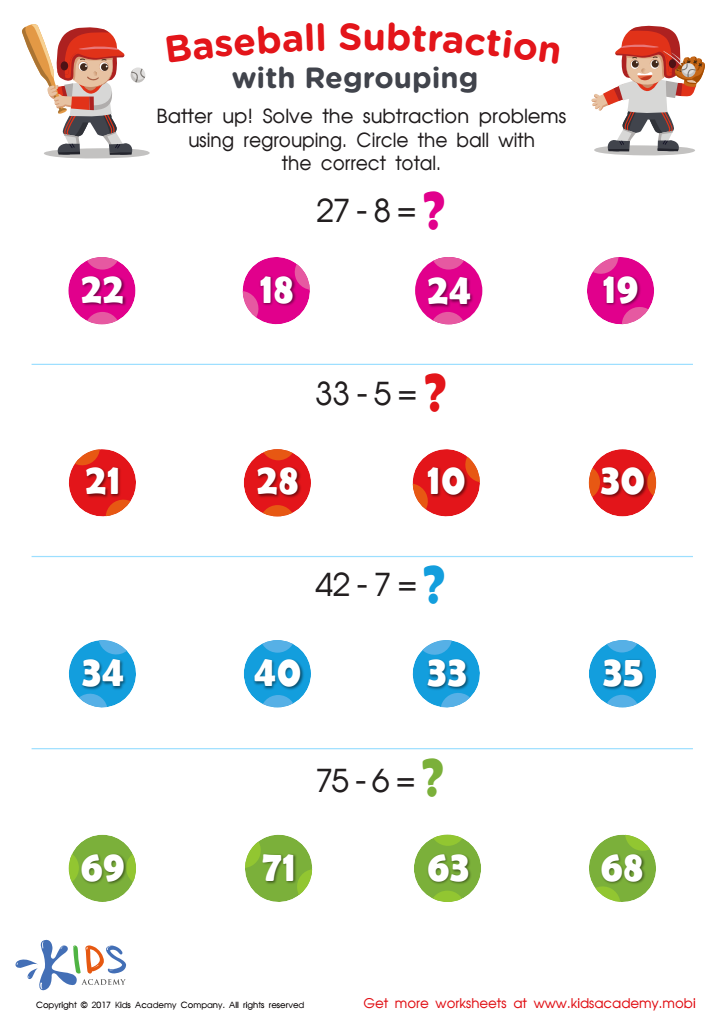

Subtraction With Regrouping for 2nd Grade Worksheet
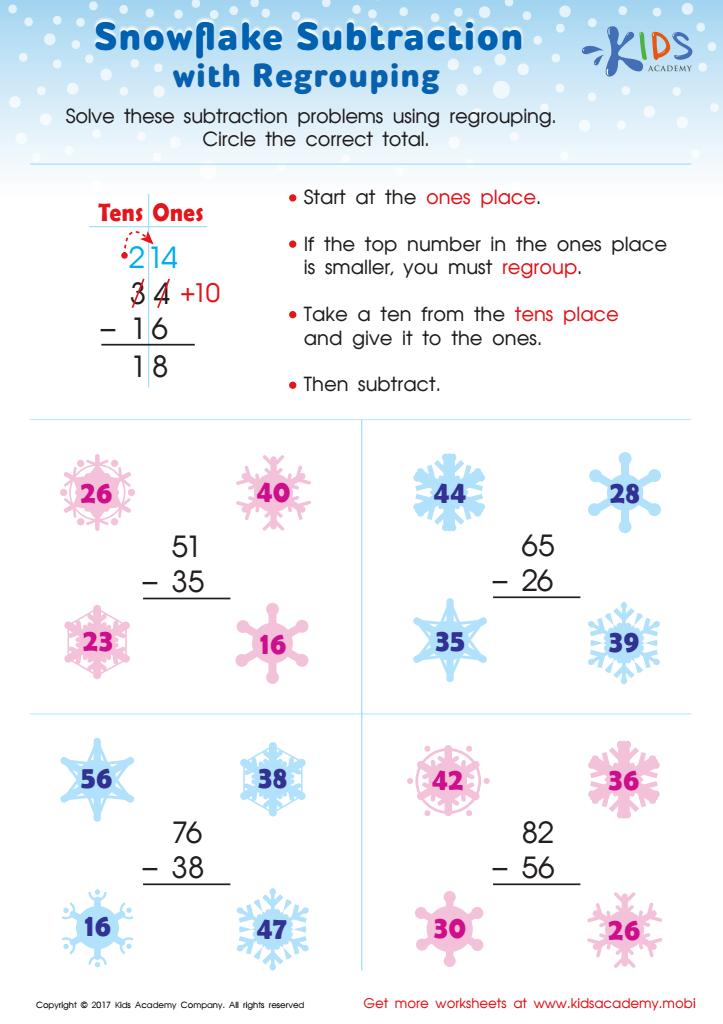

Subtraction With Regrouping Worksheet: Snowflake
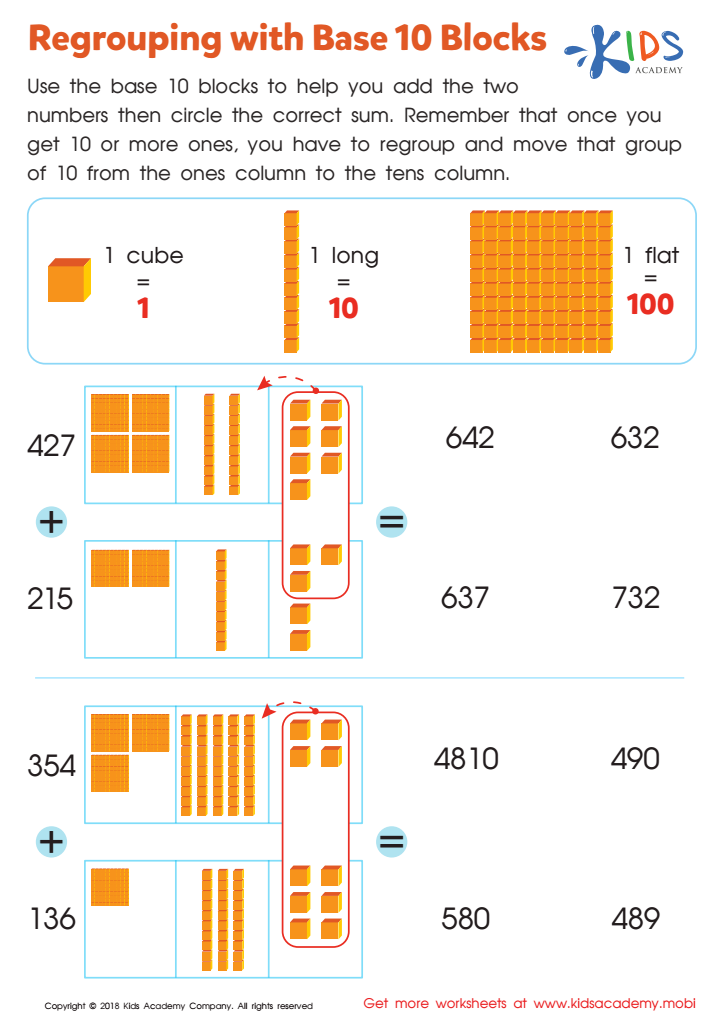

Regrouping with Base 10 Blocks Worksheet
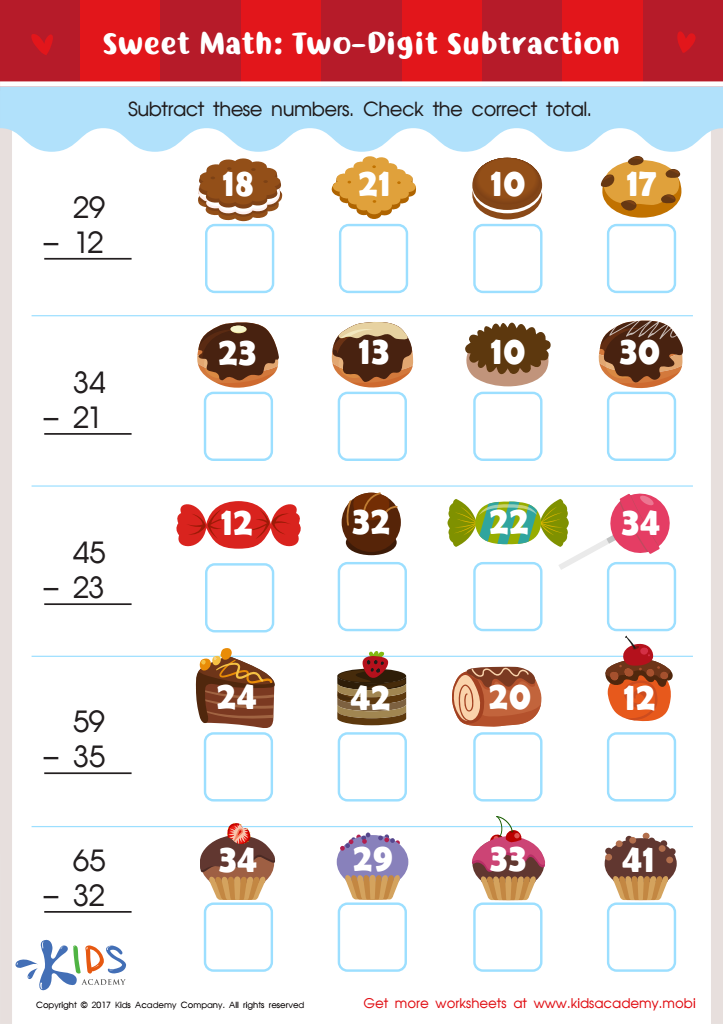

Two Digit Subtraction Worksheet
Understanding regrouping in mathematics is crucial for children aged 8-9 as it lays the foundation for more complex arithmetic operations and problem-solving skills. During this developmental stage, students shift from concrete to abstract thinking, which makes grasping the concept of regrouping particularly important.
Regrouping, also known as carrying (or borrowing) in addition and subtraction, allows children to understand how numbers work together, helping them manipulate larger numbers beyond their initial understanding of simple arithmetic. For parents and teachers, fostering this skill not only boosts a child’s confidence in math but also enhances their ability to tackle increasingly intricate mathematical problems later on, including multiplication and division.
Moreover, understanding regrouping contributes to strong numeracy skills, which are essential for everyday life and future academic success. When students successfully comprehend regrouping, they are better equipped to engage with real-world scenarios that involve budgeting, measuring, and critical thinking. Therefore, both parents and teachers should prioritize nurturing these skills, ensuring children develop a positive relationship with math and can approach more advanced concepts with ease and enthusiasm. Ultimately, this empowers children to become lifelong learners and problem solvers in a mathematics-driven world.
 Assign to My Students
Assign to My Students







